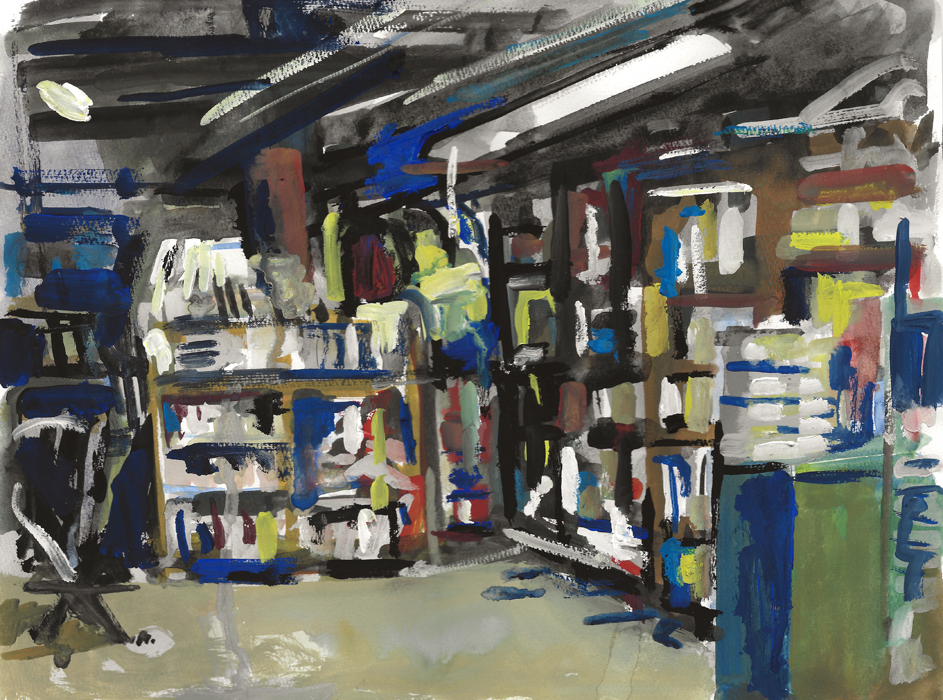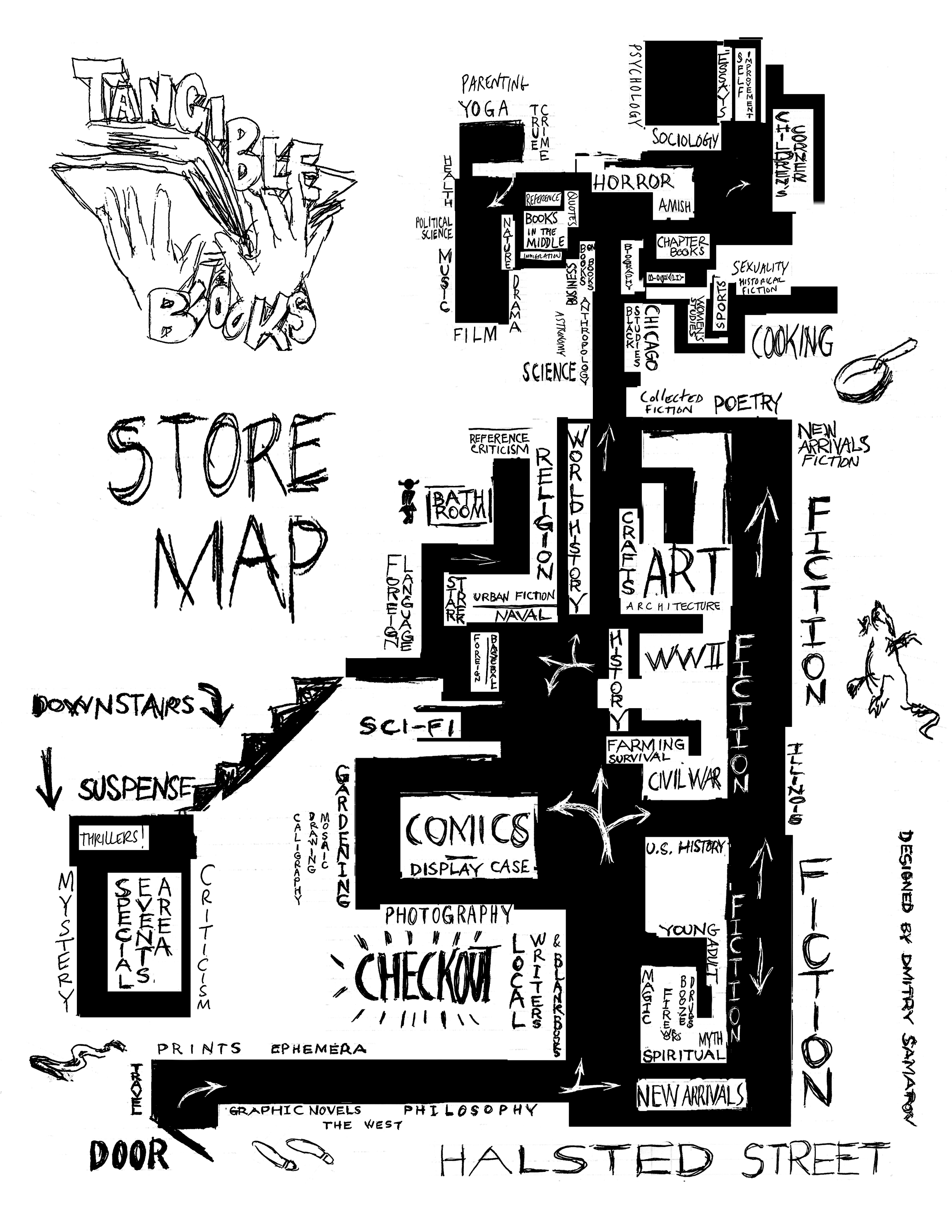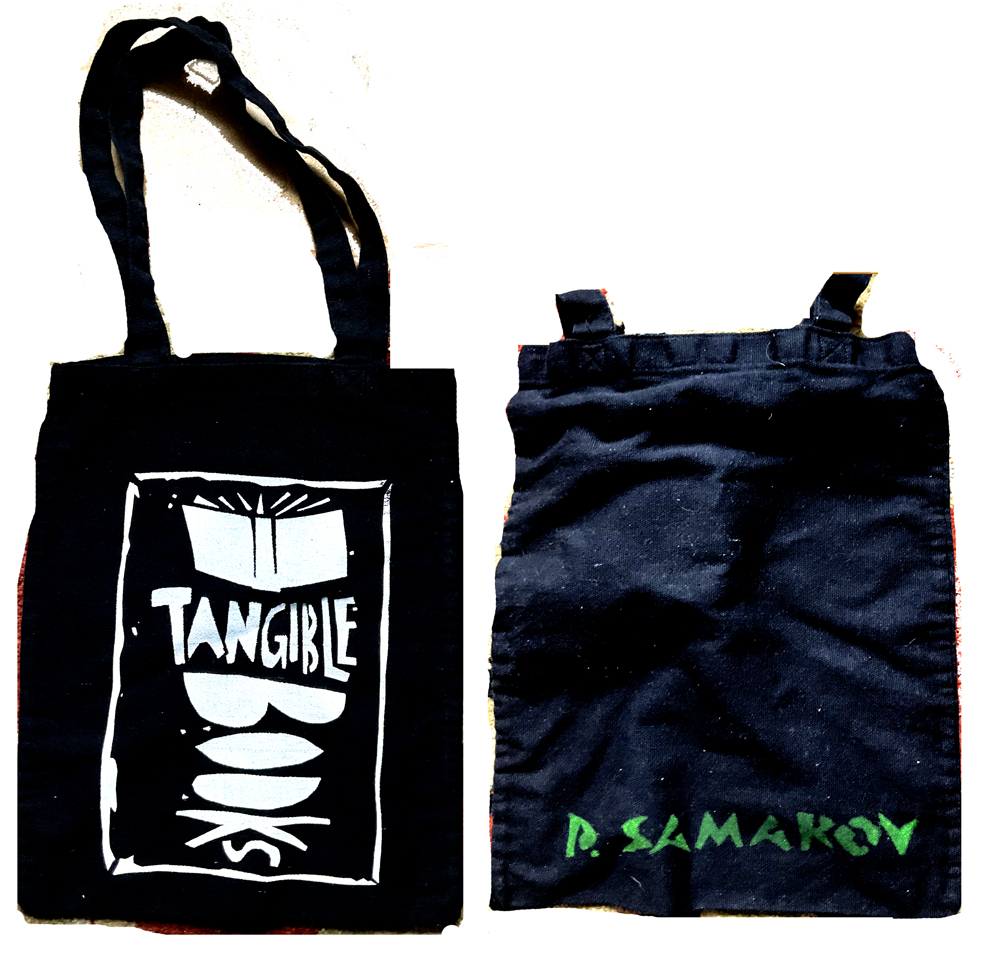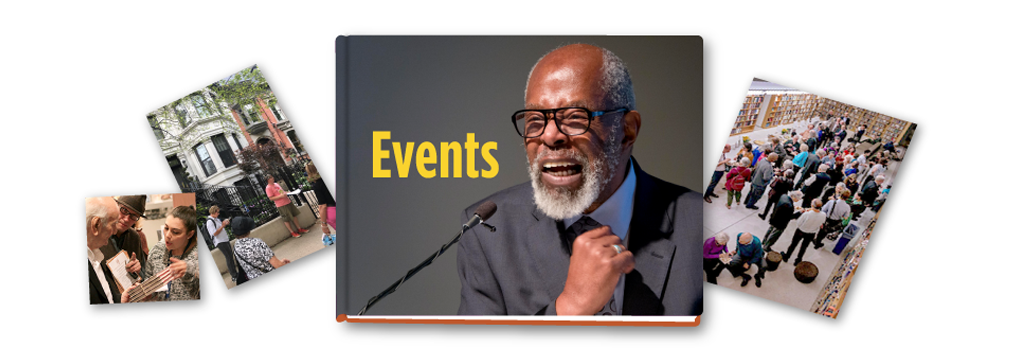Tangible Books Comes to Bridgeport
Sunday, June 2, 2024
In 2021 I wrote about a bookstore coming to Bridgeport; in 2024, I personally move a majority of its 60,000 titles next door to a new location. It’s been a voyage of discovery, as ad-copy might put it.

I stop by the window and watch the storefront fill with books and bookshelves. One time, the guy helping Joe Judd unpack is someone I used to play chess with at Myopic Books in the late 90s. The advent of this shop opening where I live in 2021 is skewing my sense of time passing.
Am I back in Wicker Park in 1997 here on Halsted Street in 2021? Of course, Tangible Books isn’t Myopic Books, just as I am 51 rather than 27. And yet, these shelves and handwritten section cards tacked to raw wooden slats beam me back.
The store opens to customers in time for the Christmas holiday rush. I come in and look around. I hear Joe telling everyone that only about half the inventory is unpacked. That this is only a fraction of the store it will one day be. But everyone who walks in is happy we finally have a bookstore here.
I bring in a couple copies of each of my books, thinking Joe will either buy them wholesale or take them on consignment. Instead, he puts them in a newly established local authors section and refuses to take a cut of the sales. It’s remarkably generous. He says the bookstore has afforded him and his family a good life and he can afford to make a small gesture of giving back.
I make a point of stopping in at least once a week. Joe and I talk about the differences between old Wicker Park and new Bridgeport. He even lets me record one of our conversations. The store has become a part of my life.
Sometime in 2023, Joe complains it’s hard to get anyone to help him put books away. Boxes, crates, and paper bags of them come in every day. Donations and gifts from neighborhood people clearing out the homes of recently-deceased relatives or elderly hoarders trying to get a handle on their condition. Whatever the provenance, in Bridgeport, Joe is the beneficiary.
After sorting the books he thinks he can sell from ones to be taken to the thrift-store or donated to prisons and literacy organizations, Joe makes stacks and towers divided by category. They wait on the big table by the door until he has the time or help to shelve them in History, Women’s Studies, Young Adult, Mystery, or an ever-expanding number of other categorized areas written in Sharpie on cardboard tabs. I volunteer to help.
My first day I stick to Fiction. I alphabetize the books in New Arrivals, then take them three or four or six at a time to their proper shelf and wedge them in where they belong. Some shelves won’t take another paperback, so I have to move three or four books down or up to make room. Because they were printed anywhere from the late nineteenth century to this year, there’s no consistency in width, height, or style of tome. It’s a hodge-podge organized by alphabet and theme rather than aesthetic or chronological criteria.
where they belong. Some shelves won’t take another paperback, so I have to move three or four books down or up to make room. Because they were printed anywhere from the late nineteenth century to this year, there’s no consistency in width, height, or style of tome. It’s a hodge-podge organized by alphabet and theme rather than aesthetic or chronological criteria.
There are personal choices at play as well. Joe has Chuck Klosterman’s books in Fiction, for instance. I question this—thinking of Klosterman more as a pop culture essay writer—but Joe just says to put it in Fiction. It’s his store. Not unlike the decor and organization of a home, a bookstore—or any kind of store that isn’t algorithmically assembled—is a kind of illustration of the owner’s mind.
Four hours pass before I empty the New Arrivals but I barely notice. Doing this scratches an itch. It’s satisfying in ways very few things I do ever are. Painting and writing are open-ended and ever-changing. There’s rarely a time when I feel a true feeling of completion. But when I pick up Volume III of E.L. James' Fifty Shades of Grey and slot it between Volume I and Volume IV, that’s all there is to it.
Shelving books becomes a regular part of my week. I go in intending to spend a couple hours and completely lose track of time. It’s nearing the 7pm closing time and Joe is turning off the lights as I’m moving the last of the Horror section next to Paranormal—the place it should have always been. Before that, I alphabetize the Parenting section, move Myth next to Occult and put Chicago in Myth’s place in order to make more room in the Fiction area. Those newly free shelves before the A’s prompt a snail’s pace shifting of the rest of the alphabet. I run out of gaps somewhere in L’s but now there’s a lot more room to maneuver.
I walk out of the store exhausted. A few hours later I’m home again with the computer open, trying to remember what books I read and when I read them.
I’ve found the perfect job for me: shelving books in a used-book store.

It doesn’t pay much and there’s no end to it but while I’m at it the world is a much more manageable place. There are achievable goals in short increments. There’s a satisfaction from completing tasks but enough variation and creativity to keep the work from becoming a monotonous bore. I can see myself doing it as long as I can still bend down and get back up.
Progress Printing, which sits one storefront south of Tangible, at 3326 South Halsted, is going out of business and the landlady offers Joe the chance to move in. It’s about double the space and the prospect of hauling books through a side door rather than via moving trucks proves too good to turn down. I try to talk him out of it, pointing out the risk of additional rent but Joe’s enthusiasm cannot be overcome. This will be his tenth location and he can’t wait to begin.
Putting aside my misgivings, I decide to go all in. I start with the basement. I have a system. It involves numbered notecards and many crates. I start in the basement with the Zs and work backwards to the As. The stairs are the hard part. Even though the crates rarely hold more than fifteen books to maintain alphabetical order, I can only carry three at a time. I load them onto the handtruck upstairs, stacking six, then wheel them teetering down the ramp, into the new space, all the way to the back room.
It's the future home of Mysteries and Thrillers and also the event space, replacing the old basement that I'm dismantling shelf by shelf.
The crates are practical. They stack and don't fall apart from repeated use and rough handling, but they're unforgiving. I have cuts all over my hands from scraping their rough edges. I pour sweat going up the stairs with full stacks and back down with empties.
When a bookcase is empty, I haul it upstairs. The new room is airy and light; totally different than the basement. I think about the millions of words I carry as I work. Some of the authors are factories rather than individuals. James Patterson, Mary Higgins Clark, Clive Cussler, Janet Evanovich, Stuart Woods, and a dozen others have thirty or forty titles each. I stack their paperbacks two deep to save space. Each one's series has a keyword in its name, like Prey or Girl or Dark. They're like branding, made to be recognized by repeat readers/customers. When they see the word they know what they're getting. They keep coming back or else I wouldn't be hauling these piles.
A few days after I finish with the Mystery room, there's a play performed in it. A fake author-signing by a pompous self-described thriller writer who sends out his own press-release comparing himself to Fleming and Clancy. I laugh along with the others. It's cool to see a room that was empty only a week before, now full of people and voices. The blur of multi-colored spines lining the walls is a fitting backdrop. The fact I put all those books there is satisfying in a way I rarely experience.
The main space slowly fills with bookcases and books. It’s just Joe, his wife, Lisa, and me. We work long days but there are visible results at the end of each one. On May 31st, we carry over Joe’s desk, the stereo system, and a half dozen boxes of books to be looked up for pricing. All that’s left at 3324 is odds and ends and a bunch of dust. It’s hard to believe this narrow, awkward storefront once housed 60,000 books. They’re right at home in the new store.
one. On May 31st, we carry over Joe’s desk, the stereo system, and a half dozen boxes of books to be looked up for pricing. All that’s left at 3324 is odds and ends and a bunch of dust. It’s hard to believe this narrow, awkward storefront once housed 60,000 books. They’re right at home in the new store.
Awhile back, Joe floated the idea of my taking over the store once his daughters are out of school. That’s still years away but the idea intrigued me enough to give up my Sunday bartending shift at the Rainbo Club. I don’t know if I’m cut out to run a bookstore but now can say I’ve moved one. That’s something I never predicted might end up on my resumé.
I made a map of the old store. Now I have to make a new one. This time I know the location of just about every book.
Dmitry Samarov paints and writes in Chicago. He is the author of six books, including his memoirs Hack and Where To? about his experiences driving a cab in Boston and Chicago.








